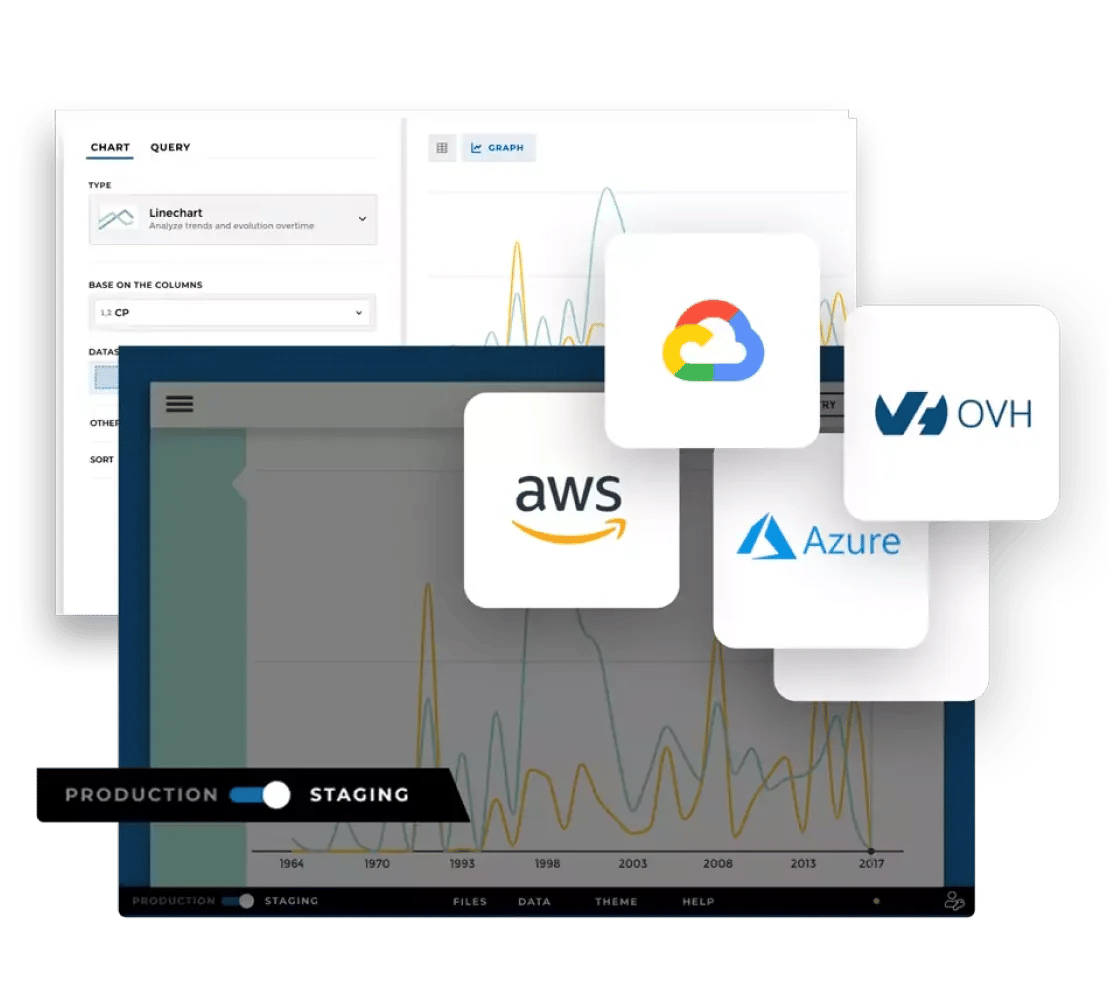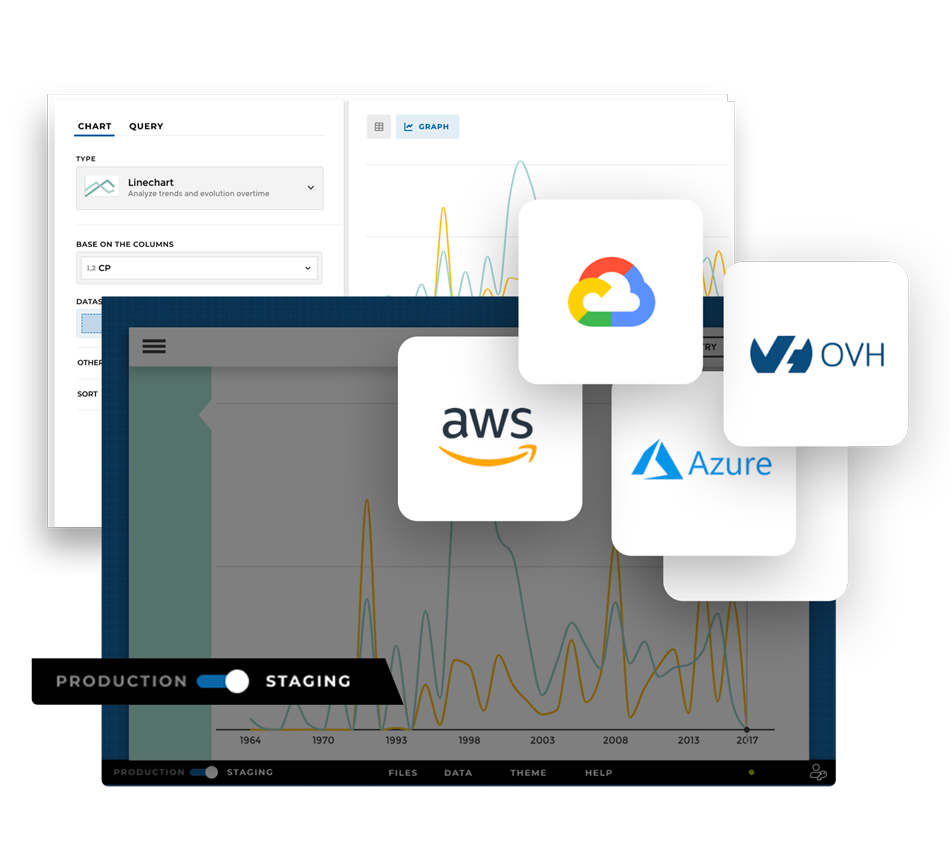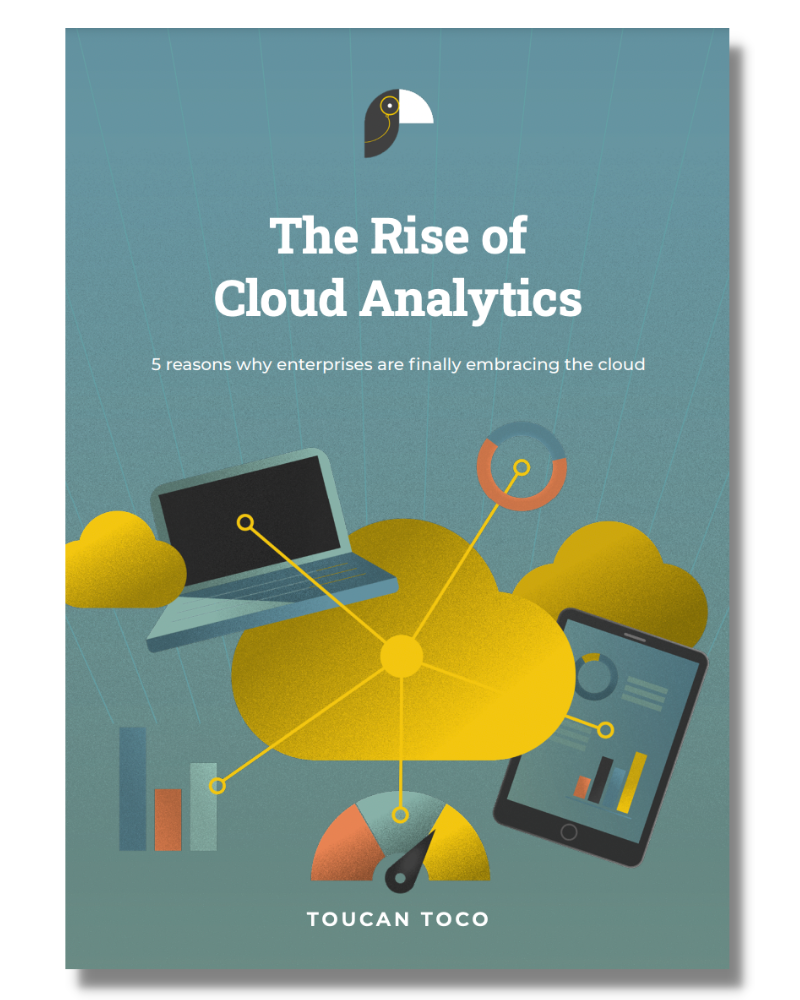Cloud-based embedded analytics refers to the use of analytic algorithms in the cloud to analyze data on a private or public cloud in order to produce a desired outcome. In cloud-based embedded analytics, scalable cloud computing is combined with powerful analytics software to detect patterns in data and extract new insights. Businesses increasingly rely on data analysis to gain a competitive advantage, advance scientific discovery, or improve life in general. In light of the increasing quantity and value of data, data analytics has become an increasingly valuable tool.
In many cases, cloud-based embedded analytics is associated with better actionable insights and data-driven decision-making. By utilizing cloud-based embedded analytics, organizations of all sizes can effectively make data-driven decisions to improve their products and services. There is no doubt that the cloud is an indispensable platform for quickly experimenting with ideas through the use of proofs of concept (POCs), as well as providing a rich ecosystem of software for the development of applications and testing strategies.
Analyzing data associated with IT infrastructure, on-premises or in the cloud, is a subset of cloud analytics. Identifying I/O patterns, evaluating application performance, identifying policy compliance, and supporting capacity management and infrastructure resilience are the primary objectives.
Cloud-based embedded Analytics Benefits
SaaS is becoming the preferred method for modern analytics more than ever before. It is because the demand for data-driven agility, coupled with more distributed working practices, has resulted in a shift away from on-premise solutions. Future big data analytics will be based on cloud computing, which will enable rapid innovation, collaborative analysis, and real-time insights.
Here are some reasons why companies move their analytics processes to the cloud:
- Lower Costs and Faster ROI. Using cloud-based embedded analytics will reduce the risk of making upfront hardware investments for on-premise servers. Additionally, you will save even more money since you will no longer need to maintain servers and software in-house.
- Power Remote and Hybrid Work. You need to provide your distributed workforce, as well as your suppliers and partners, with instant, governed access to analytics from anywhere and on any device.
- Easy Collaboration. You can take snapshots of analytics, add commentary to provide improved context, and tag discussions in the best cloud-based embedded analytics platforms. As a result, a collaborative canvas can be created that allows for both real-time and asynchronous decision-making.
- Up-to-Date Capabilities. Cloud data analytics solutions automatically update and upgrade. In the long run, that means organizations save money since they won't have to maintain on-premise servers.
- Flexible Performance. You can turn on and off cloud data analytics services as your data needs change rather than purchasing new hardware. If you have a spike in data, you can quickly scale up your services and then scale back down again when there is less activity.
- Reliability and Security. Data security risks are reduced in SaaS environments. Firstly, the likelihood of errors is much lower when servers are not manually configured. A second requirement is that SaaS providers must meet stringent security standards in order to obtain security certifications.
- Centralized Data. It is difficult to gain a complete understanding of your business when your data is scattered and siloed across your CMS, ERP, marketing automation, and countless other systems. With a cloud data analytics solution, you can bring all of this information together so that you can get a complete picture of your business and maximize insights for your entire organization.

Cloud Analytics challenges
The process of transferring data analytics to the cloud would be much simpler if it were a "lift and shift" operation. Moving applications and associated data to the cloud without redesigning them is known as a lift and shift to the cloud. In light of the fact that this is not possible when moving analytics to the cloud, you need to prepare yourself for the challenges that you will encounter.
It is important to note, however, that these challenges should not discourage you. Running data analytics in the cloud is a necessary step for getting faster insights, making better decisions, innovating more effectively, increasing agility, and gaining a competitive advantage. You will need to consider the following seven challenges.
- Technology Infrastructure
Technology in this area is constantly evolving. A comparison of what is available today with what will be available in six months will reveal many changes. Currently, Snowflake and Amazon Redshift are the two most popular database technologies. However, there are a number of players in the data analytics market. For your needs to be met, you will need to find solutions that will last over time, and that work well together. - Adding More Flexibility to the Data
You may find that your current data and analytics systems do not provide the level of flexibility and agility that your customers will require when they have access to these systems in the cloud. As your organization's requirements change over time, you will need to plan ways to make those systems more flexible. - Integrating Multiple Data Sources
Whether you are working on-premises or in the cloud, any application that requires data consolidation from multiple sources presents a challenge. For your product, customer, service, and supply data to be consistent, you may need a master data management strategy. In the event that a customer is listed as P. S. and Sons in one database and PS Sons in another, you’ve got a problem. In order to leverage analytics on top of the data, you will need to establish a solid foundation. - Acquiring New Skills and Capabilities
When you move your data analytics to the cloud, you will be utilizing new technologies. Depending on your needs, you may select Snowflake or Amazon Redshift, as well as additional AWS or Microsoft technologies. In order to make effective use of the new technologies, you will need to determine whether you have the skills in-house, or if they are available on the market. It will be necessary to develop a plan to acquire those skills and capabilities, either through internal training or external hiring. - Making Data More Usable
It is not just about the technology when it comes to data analytics. The initiative must be driven from within the organization. Customers will ask you questions such as, “How can I become more innovative and efficient - how can I help the business grow? ” You’ll need to determine how to structure the data to answer those types of questions. - Providing guidance throughout the BI maturity stages.
Depending on your organization's Business Intelligence (BI) maturity, you'll need to answer different questions. Your organization will progress through five stages of maturity and will require different tools at each stage:
- Running the business: Reports that show what happened in the business.
- Measuring and monitoring the business: Reports that help measure performance and monitor what is happening in the business.
- Integrating performance management and the business: Reports that measure KPIs across the organization and give insight that will help the organization respond to what’s happening.
- Fostering innovation and people productivity: Using the cloud to deploy enterprise metrics and actively researching new methods and technologies.
- Creating market agility and differentiation: Using the cloud capabilities to drive innovation, define business strategies, and achieve transformation within the business.
Identify where your organization stands in terms of BI maturity and develop tools and processes that will assist the organization in moving forward.
Features of Cloud-based embedded Analytics Tools
These common features can boost your productivity and results when you shop for a cloud-based embedded analytics platform:
- Data Sources: Link the solution to one or multiple data sources with automatic refreshing to always have the latest results.
- Data Models: Look for solutions that include data models to match your company’s data sets, such as sales orders, customers, items, etc.
- Processing Applications: Work with your data and alter it to uncover unexpected insights, novel uses and patterns.
- Data Sharing: Easily share information between team members to optimize productivity and efficiency across the company.
- Analytics Models: Tap into prebuilt analytics models designed for different use cases, or build your own.
- Reporting: Create accurate, detailed reports that you can confidently bring to the C-suite, board of directors, lenders or investors.
Choosing the Best Cloud-based embedded Analytics Platform
It may be new to your company, but cloud-based embedded analytics is a relatively mature field that continues to offer greater value and additional uses to businesses. As a result, you have several quality options to choose from, but not every cloud analytics platform is created equal.
Toucan offers a cloud-based embedded analytics platform with deep reporting capabilities. In order to generate insights, Toucan can leverage all the information already stored on the cloud - such as financial information, inventory and orders, human resources, and sales and marketing information. Toucan easily integrates with all the major could data storage platforms to provide a seamless experience.
Toucan comes equipped with several features like searches and filters, standard and customized reports, and a workbook tool for generating charts and reports based on user-defined parameters. Take advantage of one of these demos to learn more about how Toucan can benefit your business.
The popularity of cloud-based embedded analytics is on the rise across all types of industries due to its accessibility, reliability, and the insights that can be gained from the data it provides. Cloud analytics may be the perfect solution for companies dealing with large amounts of data and with limited resources to process, manage, and analyze it.







